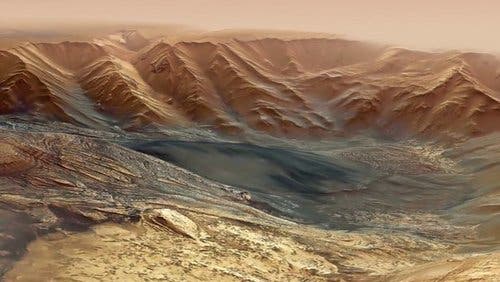Valles Marineris is the largest canyon on Mars, and in the solar system for that matter that we know of. It’s 4000 km long, 200km wide, 10 km deep and stunningly beautiful. Just so you can get a glimpse of how beautiful it is, ESA just recently posted a movie that focuses on an enclosed 8 km-deep trough in the northern most part of Valles Marineris, called Hebes Chasma. The movie glides over impact craters pockmarking the plains separating the troughs, down cliff faces scarred by landslides, and along the rough valley floor.
A while ago we posted a set of 3D photos of Mars showcasing some of the planet’s most amazing geological formations, including Valles Marineris. You might want to check it out.
The valley is not only important because of the milestone it sets in the solar system, but also because of its specific geological traits. Mars Express detected in parts of the valley water-bearing minerals, suggesting that significant quantities of water may have once flowed through it.
The formation of Hebes Chasma is likely connected to the nearby volcanic Tharsis region, home to the planet’s vast Olympus Mons volcano.
During periods of intense volcanism the whole region stretched upwards, causing tremendous stress in the crust further way. Unable to withstand the strain, the crust ripped open, collapsing into the chasms found in and around Valles Marineris.
.










